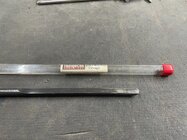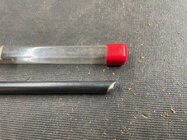I've been reading about the Crown skewchigouge and I was wondering how much they look alike? I found an old thread from 2009 where the crown tool was discussed and the Thompson was mentioned but I never found any pics of it.
If it's the one tool away from greatness I figured I might as well put the crown cost towards the Thompson tool.
Thank you oh wise ones.
If it's the one tool away from greatness I figured I might as well put the crown cost towards the Thompson tool.
Thank you oh wise ones.



